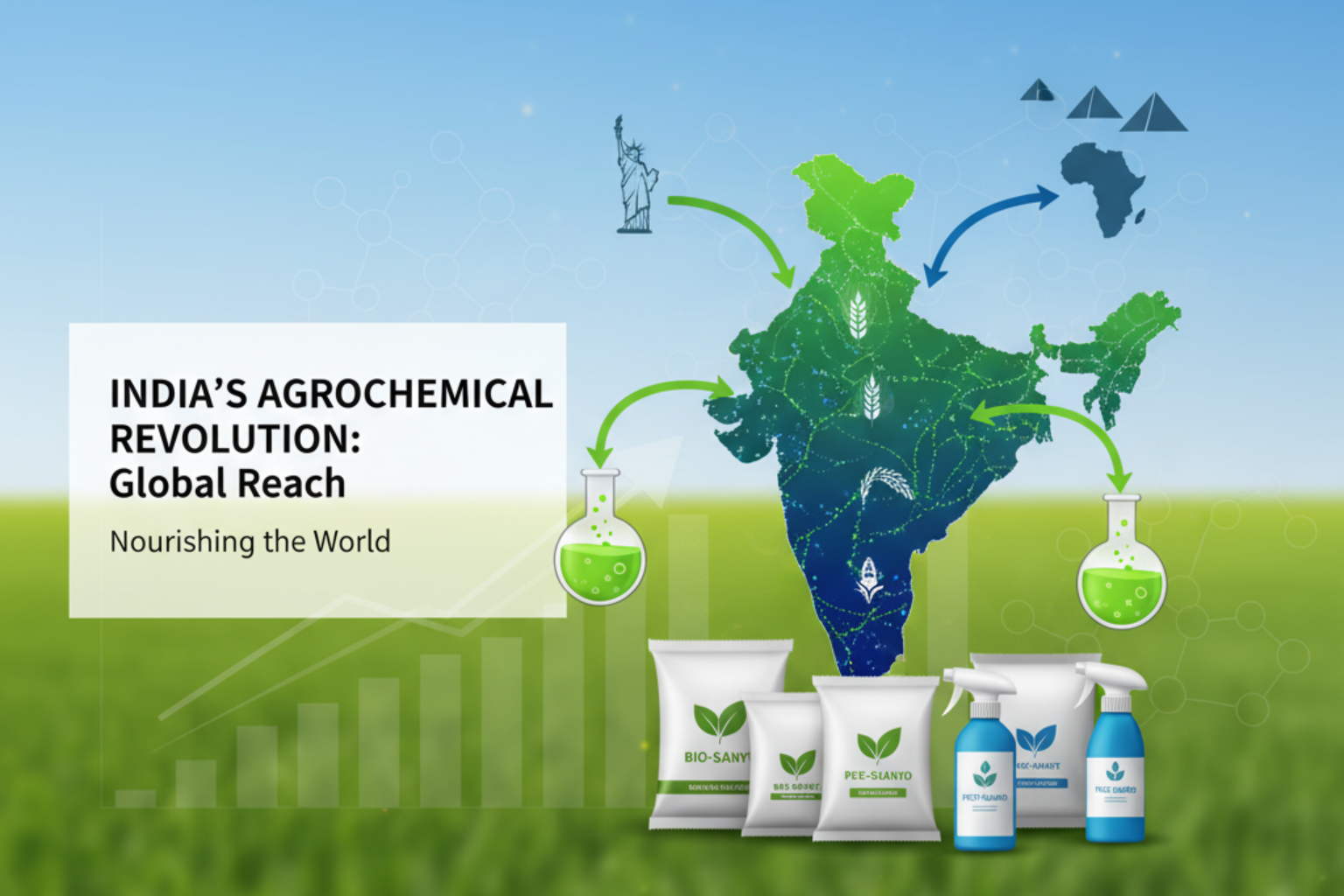
India’s Agrochemical Market to Hit $14.5B by FY28
Introduction
India’s agrochemical market is entering an era of transformation. With global agricultural output rising and farmers demanding advanced crop protection products, India’s agrochemical industry is poised to reach US $14.5 billion by FY28, growing at a compound annual rate of ~9%.
For export-focused chemical manufacturers, this marks a new window of opportunity — not just to scale production but to build long-term competitive advantage in formulation, regulatory compliance, and global supply chain integration.
India’s Position in the Global Agrochemical Landscape
- India currently ranks 4th globally in agrochemical production after the USA, Japan, and China.
- Over 50% of India’s agrochemical output is exported, with key destinations including Latin America, Europe, and Southeast Asia.
- The country’s cost-effective manufacturing ecosystem and skilled chemical workforce have made it a reliable sourcing hub for crop protection intermediates, formulations, and active ingredients.
Market Growth Drivers
- Rising Domestic Demand
- With increasing pest infestations, climate volatility, and shrinking arable land, Indian farmers are investing in crop efficiency solutions.
- The Government of India’s subsidies on fertilizers and crop protection chemicals further push the market upward.
- Export Demand Surge
- Many global buyers are diversifying away from China to reduce dependency.
- Indian manufacturers are becoming the preferred partners due to their compliance standards and cost efficiency.
- Shift Toward Specialty & Bio-Based Formulations
- Demand for eco-friendly, low-residue formulations is on the rise.
- Indian firms focusing on bio-agrochemicals and nano-formulations are expected to capture high-margin markets in Europe and the US.
Key Opportunities for Export-Focused Chemical Manufacturers
- Contract Manufacturing & Formulation Partnerships
- Global agrochemical brands increasingly outsource synthesis to Indian players to control costs.
- Firms offering custom synthesis and formulation flexibility will see higher export orders.
- Supply Chain Localization
- Establishing in-house R&D and backward integration in intermediates ensures resilience.
- Local sourcing of raw materials reduces dependency on imports, enhancing profitability.
- Strengthening Quality & Regulatory Compliance
- Export growth hinges on compliance with REACH, EPA, and FAO guidelines.
- Investment in testing infrastructure, documentation systems, and analytical validation will determine credibility.
How Exporters Can Capitalize on FY28 Growth Momentum
- Expand product portfolios to include herbicides and biopesticides.
- Collaborate with agri-tech startups for precision agriculture applications.
- Adopt digital sales channels for international B2B exposure.
- Invest in sustainable chemistry, as ESG-conscious buyers increasingly prefer green-certified suppliers.
The Road Ahead
India’s agrochemical industry’s expansion toward US$14.5 billion by FY28 is not just a number — it’s a sign of India’s evolving global reputation as a trusted supplier.
For chemical manufacturers, the opportunity lies in moving from volume-driven exports to value-driven partnerships, ensuring consistency, compliance, and innovation.
Conclusion
The next five years will define India’s role in the global crop protection value chain. Export-oriented chemical companies that innovate and strengthen supply reliability today will emerge as tomorrow’s preferred partners for the world’s agri-giants.
Read More Articles Below:
